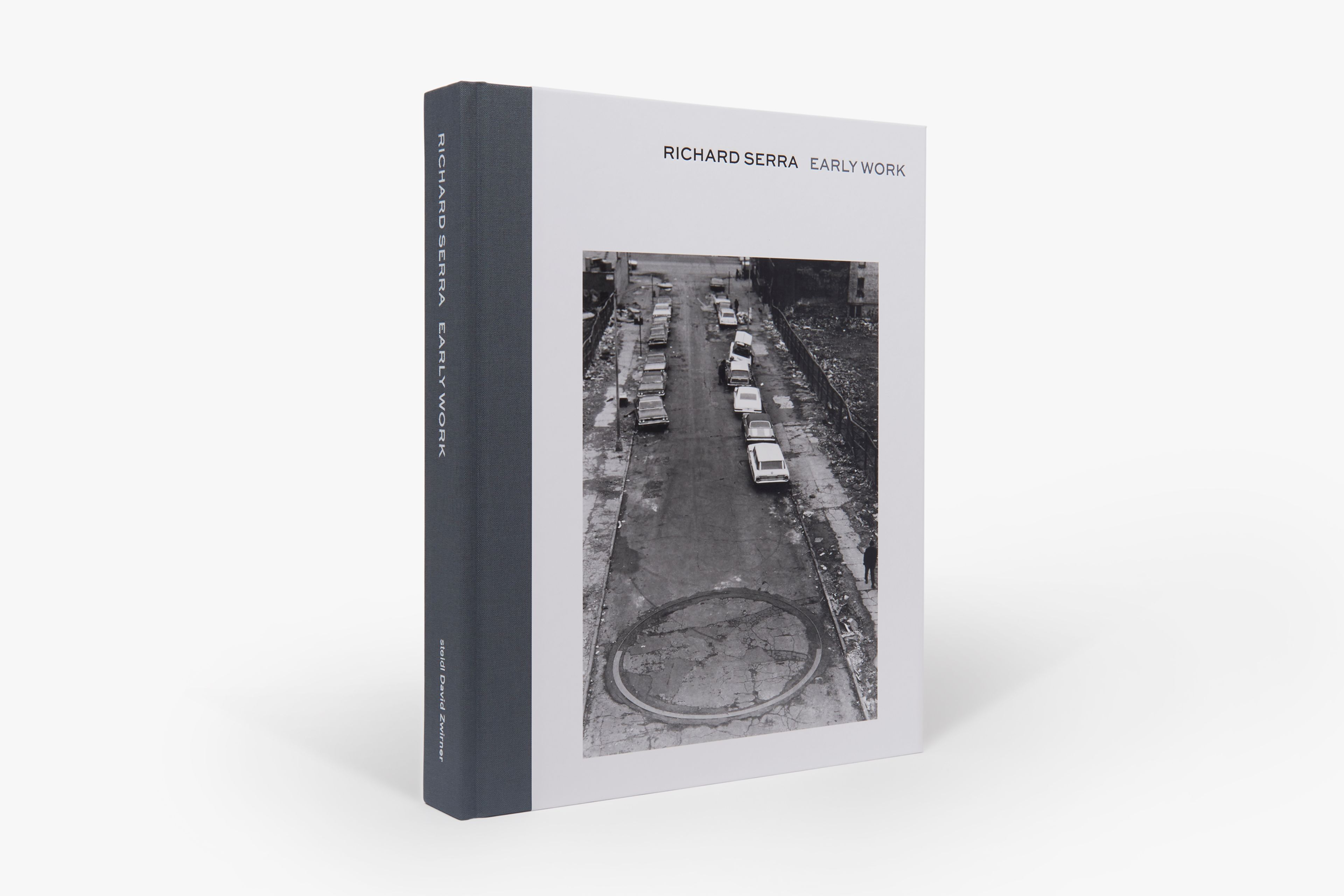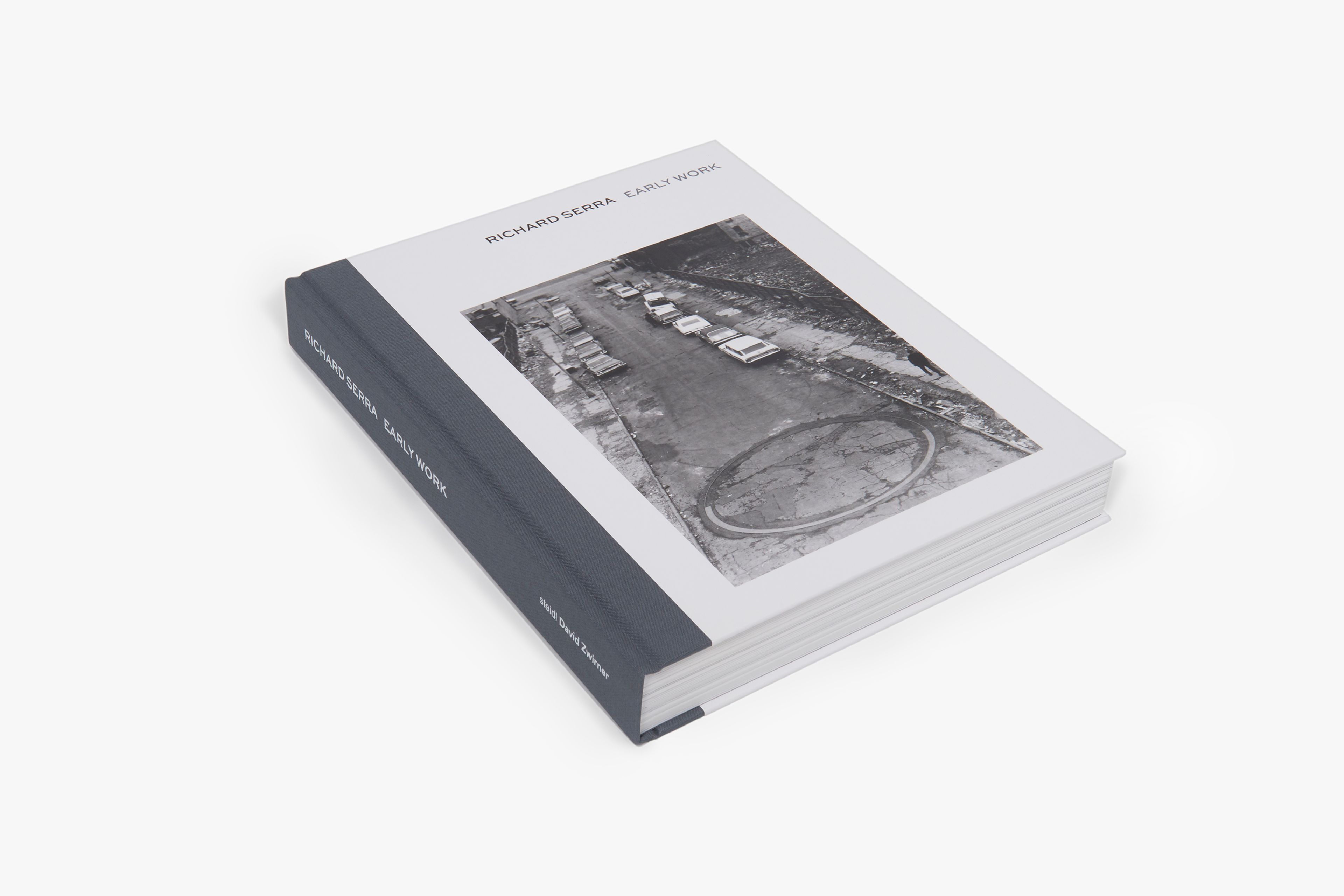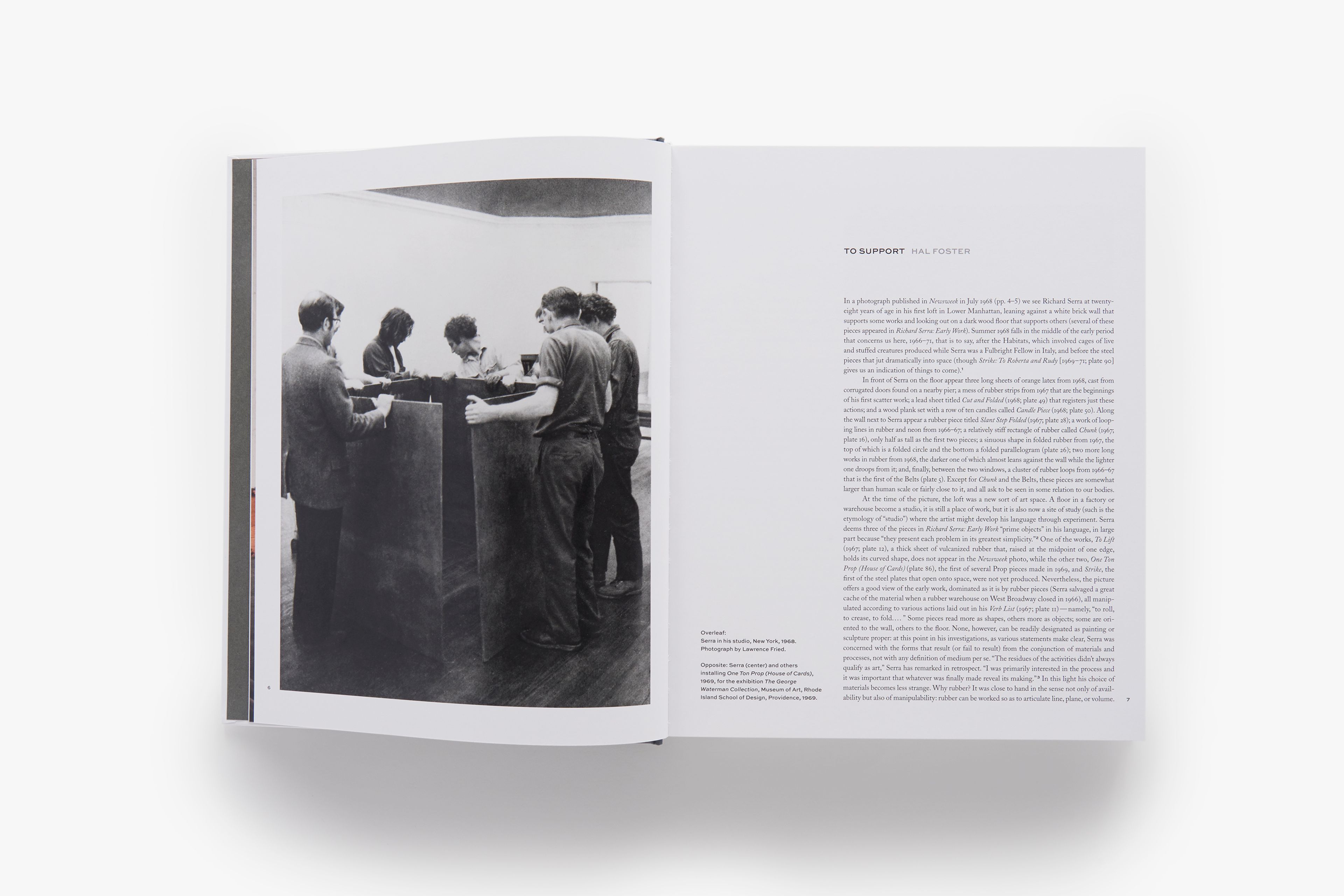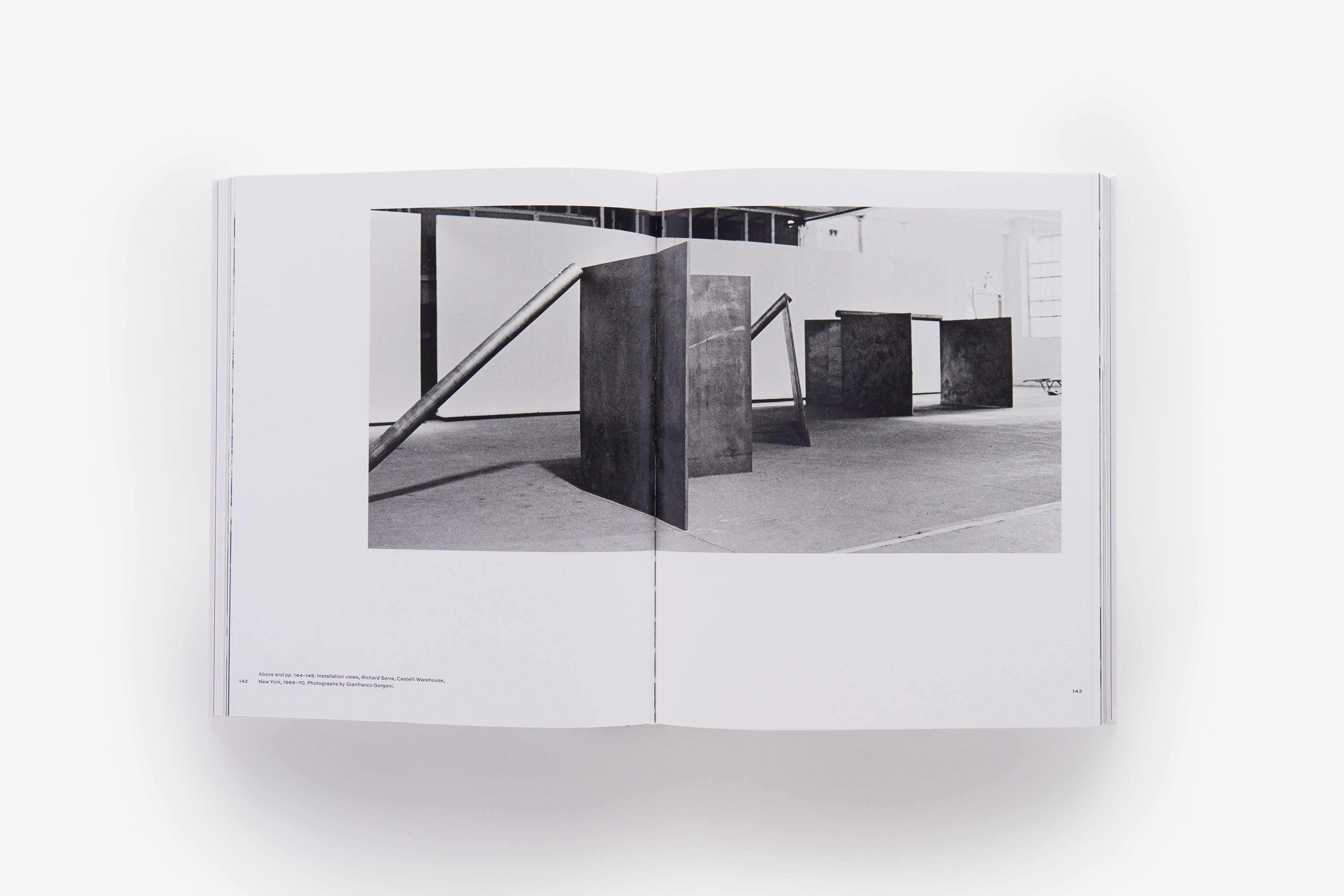
Richard Serra: Early Work
Publisher: David Zwirner / Steidl
Publication Date: 2014

Text by Hal Foster
Published to celebrate the critically acclaimed 2013 exhibition at David Zwirner in New York, a show that The New York Times art critic Ken Johnson called “near perfect,” Richard Serra: Early Work devotes over three hundred pages to a key five-year period of the artist’s earliest work. Anchored by exquisite black-and-white plates, from installation views of works in situ to documentary photographs, this “impressively realized” publication offers “a blow-by-blow account of Serra’s rapidly expanding art-world presence,” as described in a Bookforum review. Focusing specifically on work the artist produced during the period between 1966 and 1971, this classic tome documents the significance of his early work, with archival texts and reviews, alongside new scholarship by American art critic and historian Hal Foster.
Produced in close collaboration with the artist, this monograph aims to reconsider the groundbreaking practices and ideas that so firmly situate Serra in the history of twentieth-century art. Its stunning selection of seminal works illuminates the debut of the artist’s innovative, process-oriented experiments with nontraditional materials, such as vulcanized rubber, neon, and lead, and introduces the interplay of gravity and material—of "verticality and horizontality,” writes Foster—that would remain a fundamental aspect of Serra’s production over the subsequent decades. Also featured in the publication are key early examples of the artist’s work in steel, as well as stills from some of his most important early films.








Details
Publisher: David Zwirner / Steidl
Artist: Richard Serra
Contributors: Hal Foster
Publication Date: 2014
ISBN: 9780989980906
Retail: $85
Designer: McCall Associates
Printer: Steidl, Göttingen, Germany
Binding: Hardcover
Dimensions: 9 1/2 x 12 inches (24.1 x 30.5 cm)
Pages: 340
Reproductions: 19 color, 175 tritone
Artist and Contributors
Richard Serra
Richard Serra (1938–2024) was born in San Francisco and lived and worked in New York, the North Fork of Long Island, and Nova Scotia. His first significant solo exhibition was held at the Leo Castelli Warehouse, New York, in 1969, and his work has since been featured at prominent institutions worldwide.
Hal Foster
Hal Foster has been a force in American art criticism since the late 1970s, bringing psychoanalytic and poststructural theory to bear on contemporary art and its historical precedents. In 1983 he edited the anthology The Anti-Aesthetic: Essays on Postmodern Culture, which helped frame postmodernism within the arts. Foster began to write for Artforum in 1978 and was a senior editor at Art in America (1981–1987) before becoming a coeditor of the journal October in 1991, and contributes frequently to Artforum, October, and the London Review of Books. His books include Recodings: Art, Spectacle, Cultural Politics (1985), Compulsive Beauty (1993), The Return of the Real (1996), Design and Crime (2002), The Art-Architecture Complex (2011), The First Pop Age (2012), and Bad New Days: Art, Criticism, Emergency (2015). He is the Townsend Martin, Class of 1917, Professor of Art and Archaeology at Princeton University.
$50
$85